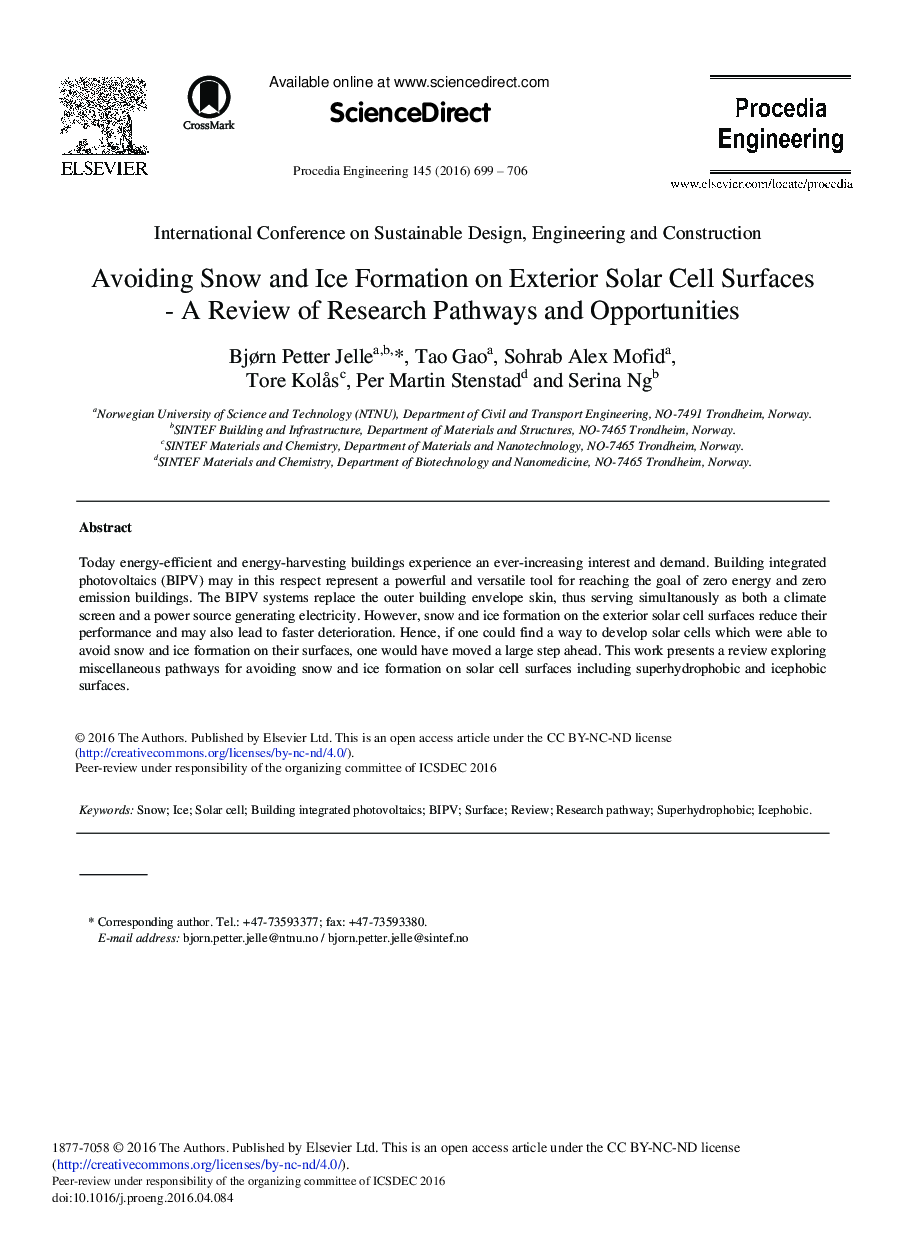| کد مقاله | کد نشریه | سال انتشار | مقاله انگلیسی | نسخه تمام متن |
|---|---|---|---|---|
| 853732 | 1470681 | 2016 | 8 صفحه PDF | دانلود رایگان |

Today energy-efficient and energy-harvesting buildings experience an ever-increasing interest and demand. Building integrated photovoltaics (BIPV) may in this respect represent a powerful and versatile tool for reaching the goal of zero energy and zero emission buildings. The BIPV systems replace the outer building envelope skin, thus serving simultanously as both a climate screen and a power source generating electricity. However, snow and ice formation on the exterior solar cell surfaces reduce their performance and may also lead to faster deterioration. Hence, if one could find a way to develop solar cells which were able to avoid snow and ice formation on their surfaces, one would have moved a large step ahead. This work presents a review exploring miscellaneous pathways for avoiding snow and ice formation on solar cell surfaces including superhydrophobic and icephobic surfaces.
Journal: Procedia Engineering - Volume 145, 2016, Pages 699–706